April 24, 2020
Fraggles are another type of Google-formatted Rich Result that can rank in a search result. Fragment is a term that we coined, to describe when Google combines a fragment of text from a page with a link to a handle, or jump link on the page. We have written and spoken at length about Fraggles, and how they could impact the Google’s long-term strategy with crawling and indexing, but if you want to get caught up, here is a webinar to help you understand what Fraggles are in SEO. What we find interesting is that the jump link does not necessarily have to be in the code for Google to do this – they can find the correct part of the page to scroll to without the jump links, and essentially put them in for you. You can see in the image below that this Fraggle is formatted as a carousel with images. When you click through on any of these restaurant options in the carousel, the link takes you directly to that part of the page, rather than just the top of the page. (You can tell that it is the middle of the page because of the yellow in the visibility scale. The top of the page is green, and it fades to yellow then red at the bottom.)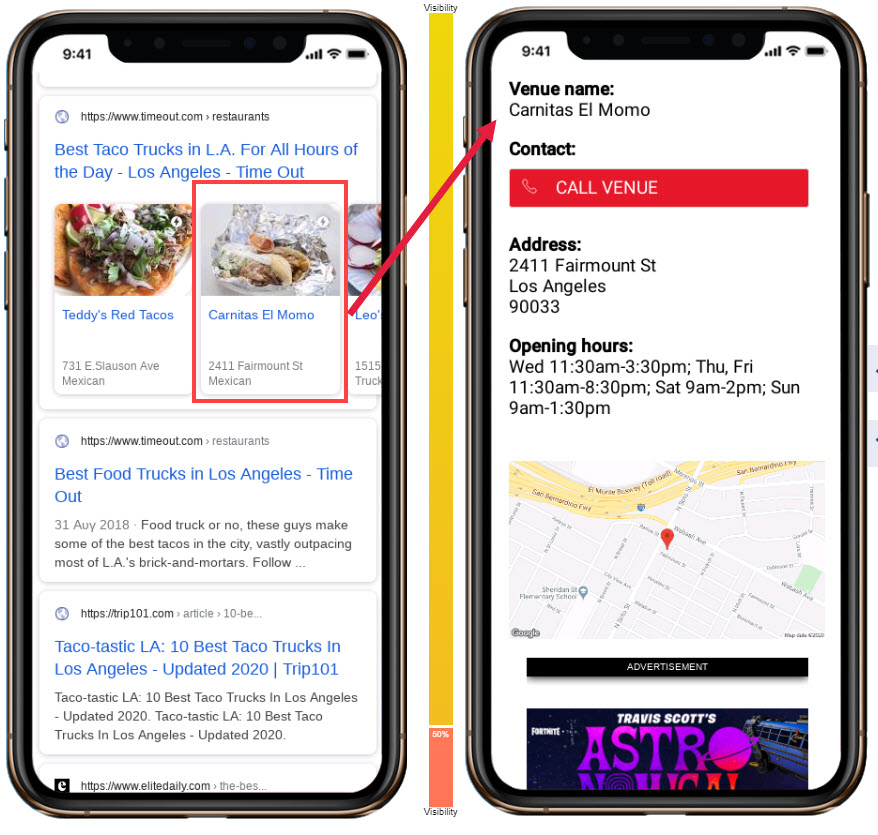
Fraggles are new and can be confusing, because they often look like regular site links or link carousels that can be included in a search result. The big difference is that a Fraggle will link to a point on a page, rather than the top, whereas other kinds of site links will link to an entirely new page. This is illustrated below with two sets of site links that appear next to each other in the SERP – one set is Fraggles and the other is not. You can tell that the first result is a Fraggle because the visibility scale to the left of the phone is yellow, meaning it is scrolled down. You can also see other links from the list in the SERP, such as ‘peppermint’ below, on the same page. You can tell that the one on the right is not a Fraggle because the visibility scale on the left of that phone is green, and the other links from the list appear nowhere else on the page. 
Fraggles draw the eye in and will help drive more traffic from any ranking position on the first page of results. The problem is that noting, Google Search Console is reporting on the Fraggles in your rankings – so you have no way of knowing if you have earned them, or if you competitors have. If they rank above your website, they are likely distracting searchers considerably from clicking on your link. The easiest way to track the presence or absence of Fraggles, where they rank and what they include is using the MobileMoxie SERPerator. It can auto-capture full length mobile search results, and archive them for you to compare the everything that actually happened in the SERP, how it looked and how likely it was to take relevant traffic from other rankings. Here are instructions for how to do that:
1. Start by logging into your MobileMoxie account, and click on the top tab on the left that says SERPerator, and then click below to see the Live Testing view (If you don’t have a MobileMoxie account yet, you can register for a 7 day free trial here).

2. Next, add the address that you want to test from. This can be a full address, down to a specific street address, or it can just be a city or post code/zip code. If you leave the postcode and street address blank, we will just measure from the geographic center of the city. If you don’t have a specific address or post code that you want to check, you can just choose the city name, and we will use the geographic center of the city for the test. Don’t forget, the SERPerator works for testing in most countries in the world, so if you are doing business in different countries, it might be a good idea to set up multiple tests for each country or major location.
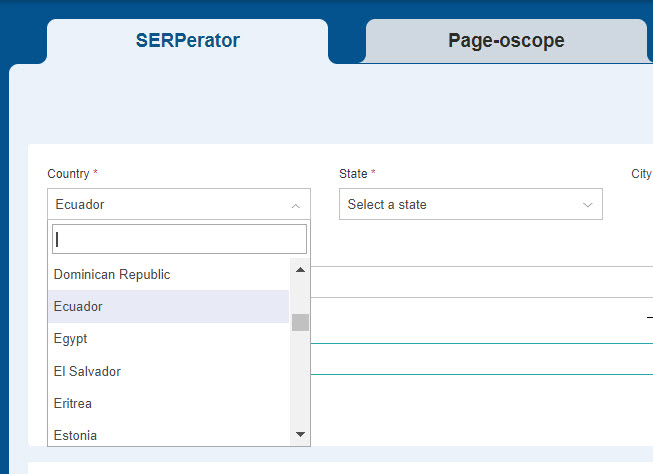
3. Add in the query that you want to test for finding Fraggles. Remember, search results, including Fraggles can change based on the language setting of the searcher, so just select the language that corresponds to the most-likely phone language of your users, and you are done. (The only search engine available in the tools right now is Google, so leave that as it is).
4. Now just choose the phone or phones that you want to test on, and hit ‘Run Test’. We recommend testing with two phones – one iOS device and one Android. If possible, it is also a good idea to choose different size screen phones – one large phone and one small phone; this will give you the strongest sense if there are changes in the way results are displayed between the different OS, and the different size phones. The phone OS usually won’t make a huge difference in these kinds of searches, but the size of the phone could. Google does not seem to change Fraggles results much based on phone size or OS – although the the presentation of Fraggles does seem to be quite variable, so it should not be ruled out in the future. 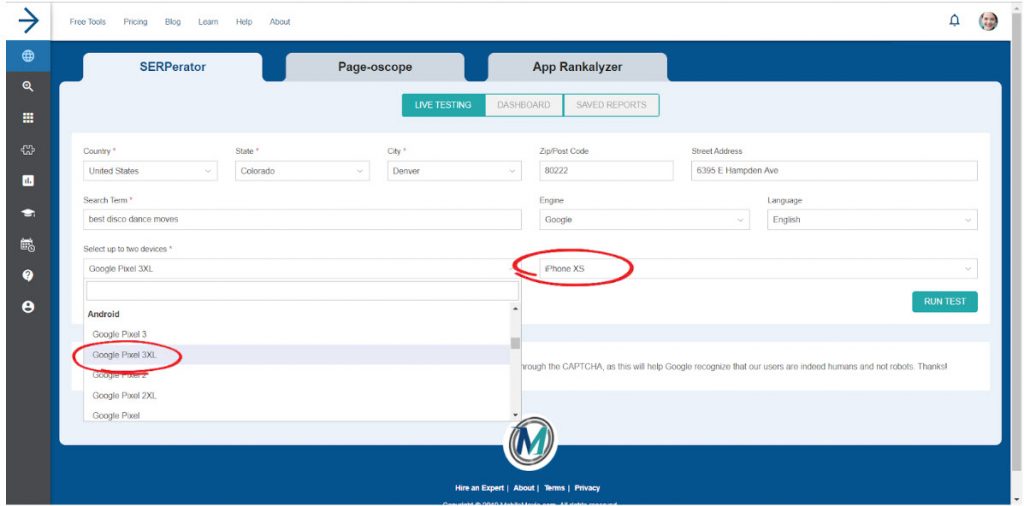
5. Next Step – Check out the results! Remember that Fraggles can be formatted in a variety of different ways, and can look the same as other types of results. The key is if they link to a section of a page, and the link scrolls directly to that part of the page on its own. It is is also important to remember that you don’t necessarily have to add the jump links/named anchors/bookmarks/handles into your code, for Google to rank things as Fraggles. In our research it does tend to help, as does having the same sort of text highlighted as H2’s throughout the page, as in some kind of list heading, but this is also not required.
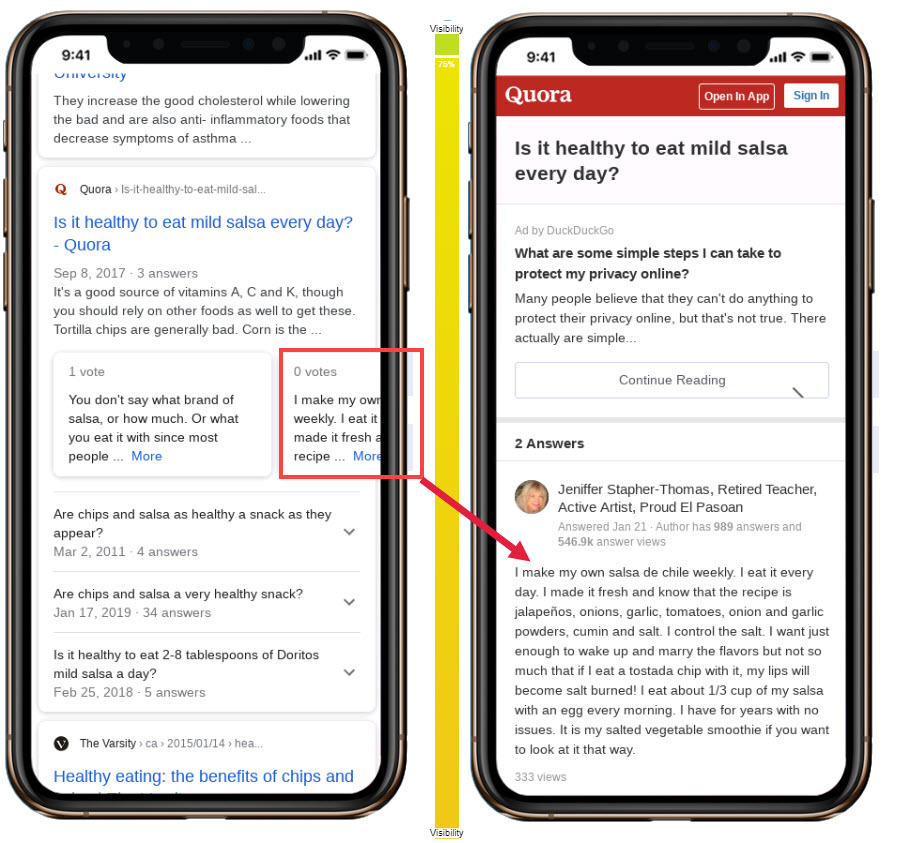
You can see in the example below that the Fraggles in this example are simply a carousel of text links.
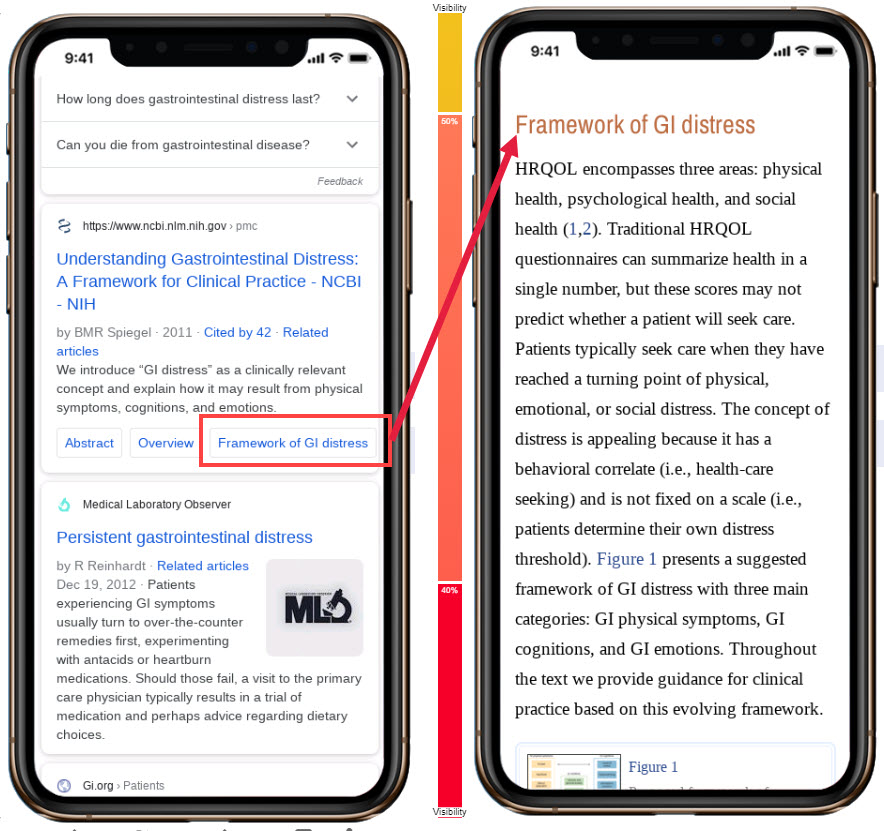
The best way to see if something is a Fraggle rather than a traditional link is to click through. The live version of the SERPerator lets you do this, so it is a good idea to verify where the links go, before you set up the long-term tracking for the result. Simply click on the link that you think might be a Fraggle, and the SERPerator will take you there, and scroll just like a phone would. The only thing that can prevent the scrolling from happening correctly in the tool is things like hovers, modals and other JavaScript messaging, like those sometimes used for cookie notifications. In cases where these are present, you may have to click to accept cookies, before the scrolling will work properly. Remember, the SERPerator has a ‘back’ and ‘refresh’ button at the bottom of each phone, so these should help you manage, if you encounter any modals while you are testing.
6. Finally, you can click the ‘save’ icon below each of the phones – Each test, aka each phone, must be saved separately, so it is fine if you only want to save one of the results, to test on a regular basis. When you click the ‘save’ icon, a modal will pop up with options. You have the option to re-run this test daily, weekly or monthly, and you can specify things like the day and time that you want it to run. You also have the option to run the test, not just in the address or location that you specified, but in a radius around the area, to see if the result changes. If you choose non-local, you will only test in the one location, but if you choose ‘local’ the tool will test with 12 different addresses in a 20 mile radius of your main address. When you are done here, click ‘Next’.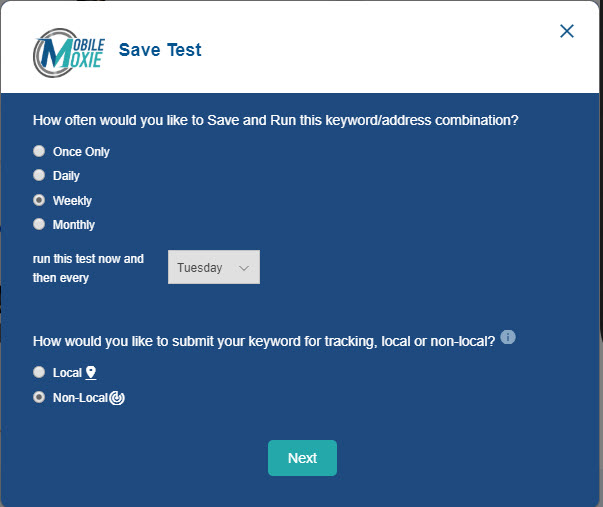
7. Next, you can replicate the test for those locations. You will be given the option to run the same test in multiple locations outside of the 20 mile radius. This is great if you want to compare how this test looks in different cities, states or countries that you serve, or if you want to to the same test at multiple store locations. (If you want to run this test in multiple locations that are not already set up in the tool, go to the ‘Dashboard’ CSV uploader, then come back to this step if you need to.) Click ‘Submit’ and then you are done. The test will be added to your dashboard, and you can see the progression of your tests there.
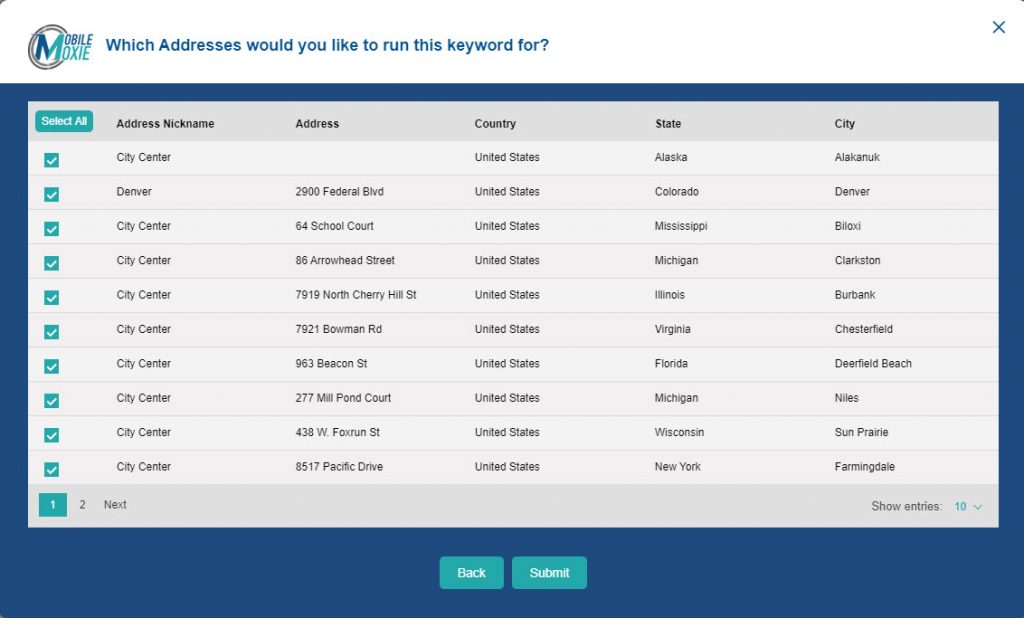
Optimizing and tracking the impact of Fraggles in SEO is a new opportunity for digital marketers to see and benefit from the optimization that they are creating for their clients, even when it is hart do report on from other, more traditional SEO tools. There is currently no way to easily track which results for you and your competitors are getting Fraggles in SERPs, and find out what is actually showing in each of your search results. The MobileMoxie SERPerater allows you to track SERP changes and help you discover new opportunities as they appear in the SERP, especially when following up attempts to create Fraggles in your content. We hope you have found this step-by-step tutorial valuable!